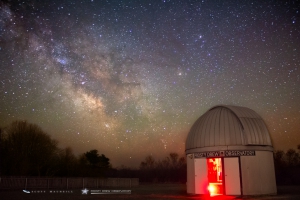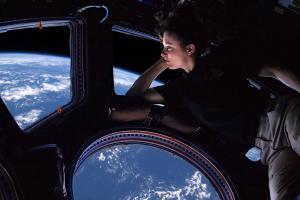
Summer Stargazing Nights
- Where:
- Frosty Drew Observatory
- When:
- Friday May 27, 2016 at 7:30 p.m.
- Cost:
- $1 Suggested Donation per Person
Tonight is Stargazing Night at Frosty Drew Observatory! We can expect partly cloudy / rainy / foggy skies tonight, it’s all is up for grabs. Tonight's forecast, being massively uncertain, is not a deal breaker yet. We may still grab fabulous views of Jupiter, Mars, and possibly Saturn in between whatever weather we get. Add in that it's Memorial Day weekend, and you could have a great night to kick off your holiday frivolities.
We plan to open the Observatory and Sky Theatre at 7:30 p.m. In the Observatory we will have about an hour of daylight to showcase our telescopes and equipment. Once the Sun sets, telescopes will start with a twilight view of Jupiter, binary stars, and Mars. Once twilight fades, we will showcase dozens of nebulae and star clusters. The 60% waning gibbous Moon will rise around 12:30 a.m. with dark skies available for us to geek out with before. In the Sky Theatre we will be presenting a showcase of celestial objects photographed at Frosty Drew Observatory. We will stay open until either the clouds or Moon chase us out and will post updates to our Twitter (@FrostyDrewOBSY) and Facebook with a final “Closing up” post when we decide to pack it in. If unfavorable weather moves in early, we will go on standby and wait until at least 10:00 p.m. before packing it in.
Overall, the forecast could crash our awesome tonight, but with so much uncertainty in the forecast, we may score. Keep up with us on social media for updates so you can make an informed decision about making the drive. The bright Moon will rise pretty much with the Milky Way after midnight, obscuring our view of the fabulous dust lanes and galactic arms visible at Frosty Drew. Though dark skies will rock until then. So put Frosty Drew on your calendar of fabulous holiday weekend kick offs and start your Memorial Day festivities with the cosmos!
-------------------------------------------------------------------------
Weekly Happenings
Scott MacNeill
This past Sunday, May 22nd, Earth and Mars reached the point in their yearly orbits when they align with the Sun. We call this opposition, meaning Mars is on the opposite side of the Earth than the Sun, and is generally the best time to observe Mars. Though inundated with nighttime cloud attacks in 2016, we were able to sneak a peek at Frosty Drew Observatory early Monday morning. Mars' visible surface has areas that display awesome features, with other areas lacking in aesthetic hotness. Since Mars has a 24 hour 37 minute day, compared to Earth's 23 hour 56 minute day (Sidereal time), we see generally the same side of Mars each night when viewed around the same time. We have noticed this year that a rather unfavorable side of Mars is somewhat in view, compared to the 2014 opposition. Regardless we hooked up the camera and snapped away. Check out our photo:
Mars will continue to rock up until and past its date of closest approach on May 30th. Now get out there and see the red planet for yourself!
Last night, May 26, 2016, the International Space Station (ISS) returned to the evening sky over New England. Since the ISS orbits the Earth once every 93 minutes incline 51.6° to Earth's equator at an average altitude of 220 miles, we see the ISS periodically throughout the year, usually in either the morning or evening sky. When the ISS visibly passes over, the light we see is just sunlight reflecting off of the Station, the subtle lighting on the Station is not visible to us on the ground. So the ISS has to be in sunlight, while we on Earth are in darkness for the ISS to be visible when passing. This is why we don't usually see the ISS passing at midnight, with most passes happening in the hours after sunset or before sunrise. Being that we are approaching the Summer Solstice (June 20, 2016), when Earth's Northern Hemisphere is at maximum tilt towards the Sun, the ISS has a much greater chance of being in direct sunlight when viewed from the Northern Hemisphere at night. This will give us a nice step up in visible passes, with the ISS being visible on every orbit overnight for the next couple of nights. You can track the ISS and get notification when it is visible over your location compliments of NASA's Spot the Station. Read up about the ISS. Then grab that camera, or just your sexy self and set out on a clear night to catch the ISS passing over. Snap a pic? Post it on our Facebook and we'll share it on our time line. Happy viewing!
-Scott


